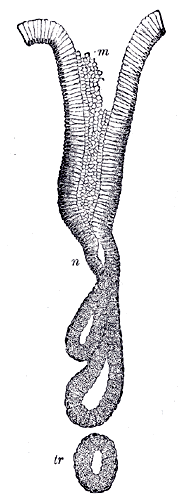| Tubular gland | |
|---|---|
 | |
| Details | |
| Identifiers | |
| Latin | glandula tubulosa |
| TH | H2.00.02.0.03021 |
| Anatomical terminology | |
Tubular glands are glands with a tube-like shape throughout their length, in contrast with alveolar glands, which have a saclike secretory portion. [1] [2]
Contents
Tubular glands are further classified as one of the following types:
| Type | Description | Location | |
|---|---|---|---|
 | simple tubular or simple straight tubular [3] or straight tubular [4] | the gland is a uniform tube | Small intestine (Crypts of Lieberkühn), uterine glands |
 | coiled tubular or simple coiled tubular [5] | the gland is coiled without losing its tubular form | sweat glands |
 | simple branched tubular [6] or compound tubular [7] | branching occurs in the tubes | pyloric glands of stomach |


